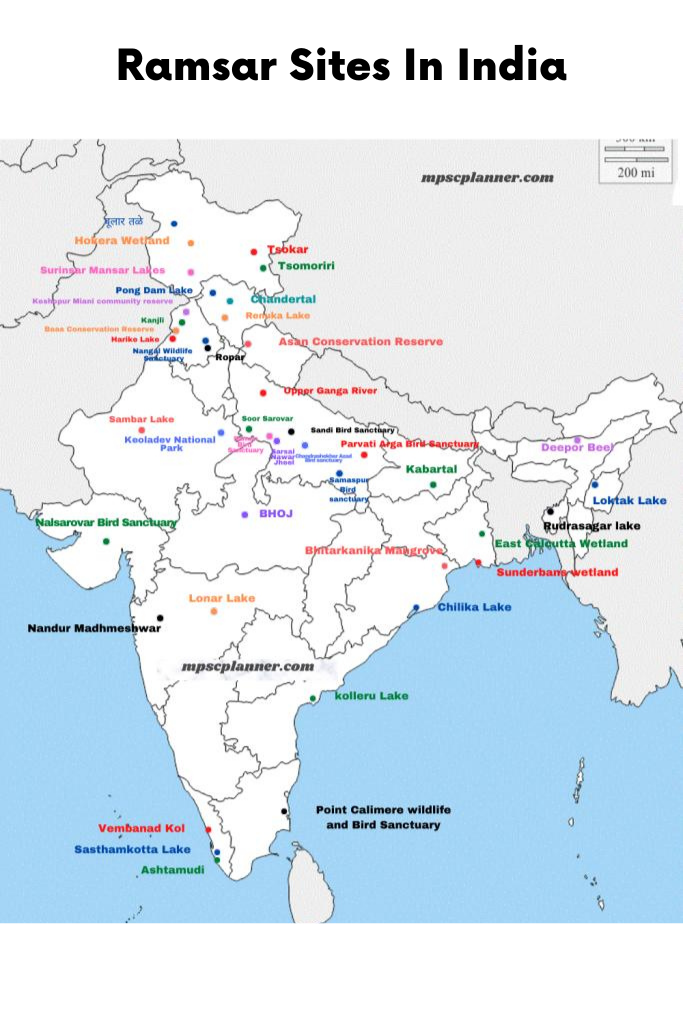Wetlands and Ramsar Convention
- One Young India
- Mar 7, 2022
- 3 min read
Updated: Dec 27, 2022
Introduction
The Ramsar Convention is an international convention that establishes a framework for the conservation and wise use of wetlands and their resources. It is the only global treaty that focuses specifically on wetlands.
The Convention was signed in the Iranian city of Ramsar in 1971 and came into effect in 1975. Since then, about 90 percent of UN member nations have become "Contracting Parties," pledging their support for the Convention's three pillars:
Objective
Work towards the wise use of all their wetlands
Designate appropriate wetlands for inclusion on the list of Wetlands of International Importance and ensure effective management of these wetlands.
International cooperation on transboundary wetlands shared wetland systems, and shared species is encouraged.
The Ramsar Convention on Wetlands defines wetlands as
“areas of marsh, fen, peatland or water, whether natural or artificial, permanent or temporary, with water that is static or flowing, fresh, brackish or salt, including areas of marine water the depth of which at low tide does not exceed six meters.”
The Wetlands (Conservation and Management) Rules, 2017 notified by the Union Ministry of Environment, Forest and Climate Change define wetlands as
“area of marsh, fen, peatland or water; whether natural or artificial, permanent or temporary, with water that is static or flowing, fresh, brackish or salt, including areas of marine water the depth of which at low tide does not exceed six meters, but does not include river channels, paddy fields, human-made water bodies/ tanks specifically constructed for drinking water purposes and structures specifically constructed for aquaculture, salt production, recreation and irrigation purposes.”
Montreux Record
The Montreux Record is a register of wetland sites on the List of Wetlands of International Importance where changes in ecological character have occurred, are occurring, or are likely to occur as a result of technological developments, pollution, or other human interference. It is maintained as part of the Ramsar List. Currently, two Indian wetlands are on the Montreux list: Keoladeo National Park (Rajasthan) and Loktak Lake (Manipur). Chilka Lake (Odisha) was included in the record but afterward removed.
What are the Benefits of Wetlands?
Wetlands are highly productive ecosystems that supply about two-thirds of the world's fish harvest. Wetlands play an important part in the watershed's ecology. The combination of shallow water and high nutrient levels is perfect for the development of organisms that constitute the foundation of the food web and provide food for many kinds of fish, amphibians, shellfish, and insects. It acts as an ecotone area.
Wetlands retain carbon in their plant communities and soil rather than releasing it into the atmosphere as CO2.
Wetlands act as natural barriers, capturing and slowly releasing surface water, rain, snowmelt, groundwater, and floodwaters. Wetland vegetation also slows floodwaters, lowering flood heights and reducing soil erosion.
Wetlands are essential to human and environmental existence. Wetlands are an important source of food, raw materials, genetic resources for pharmaceuticals, and electricity.
They play a significant role in transportation, tourism, and people's cultural and spiritual well-being. Many wetlands are natural regions of beauty that attract tourists, and many are important to Aboriginal people.
They provide habitat for animals and plants, and many of them are home to a diverse range of life, including species and creatures found nowhere else.
Wetlands also bring significant economic benefits to the industry. They, for example, serve as nurseries for fish and other freshwater and marine life and are vital to the commercial and recreational fishing sectors.
Threats
Urbanisation
Pollution
Climate Change
Agricultural Expansion
Conclusion
Effective cooperation between academics and professionals, including ecologists, watershed management specialists, planners, and decision makers, for overall wetlands management. Spreading knowledge by launching awareness campaigns on the importance of wetlands, as well as continuous monitoring of wetlands for water quality, will give critical inputs to protect the wetlands from further deterioration.

